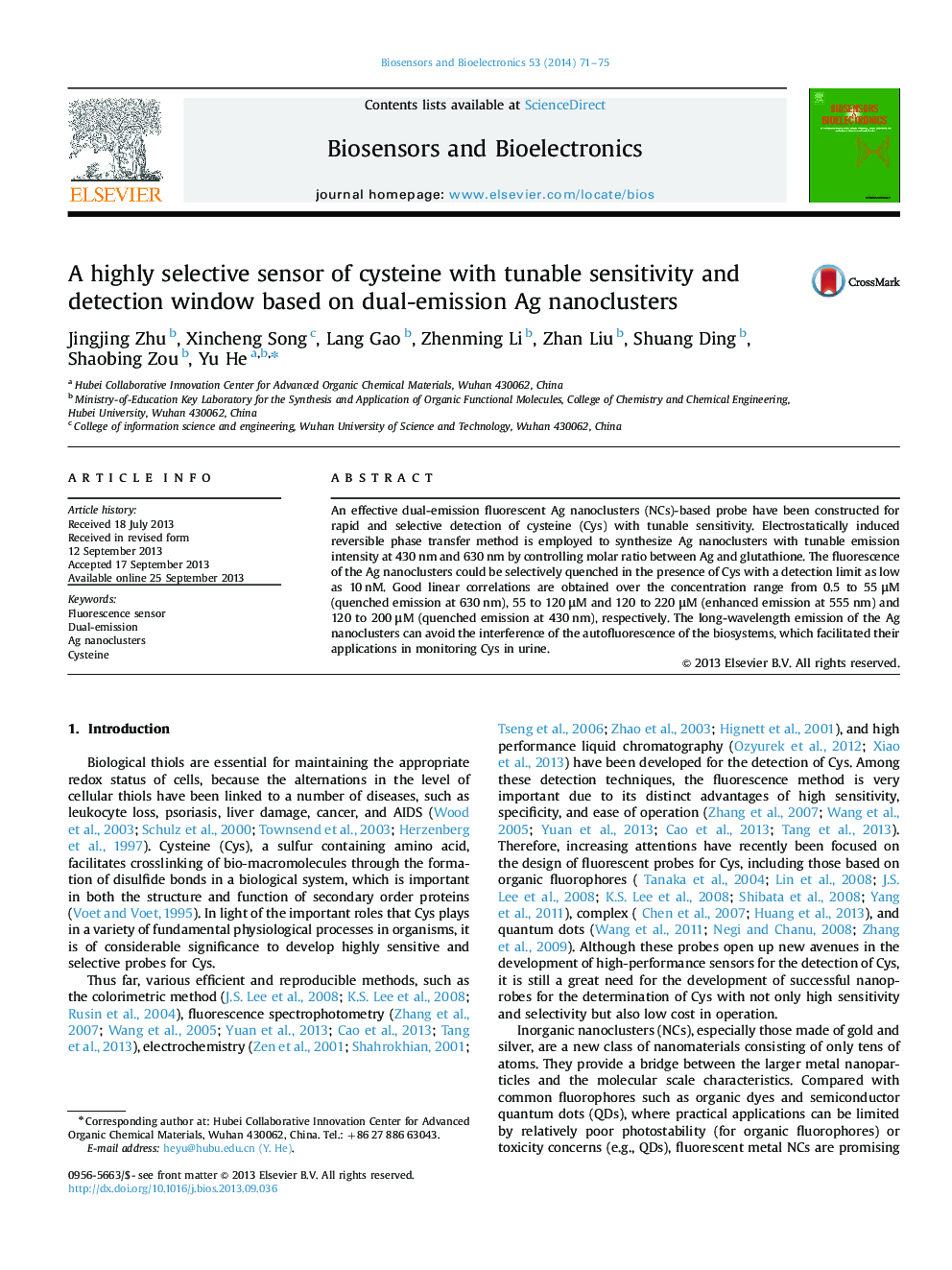| Article ID | Journal | Published Year | Pages | File Type |
|---|---|---|---|---|
| 866674 | Biosensors and Bioelectronics | 2014 | 5 Pages |
•An effective dual-emission fluorescent Ag NCs-based probe has been constructed.•Reversible phase transfer method is employed to synthesize Ag NCs with tunable dual-emission.•This established probe can avoid the interference of the autofluorescence of the biosystems.
An effective dual-emission fluorescent Ag nanoclusters (NCs)-based probe have been constructed for rapid and selective detection of cysteine (Cys) with tunable sensitivity. Electrostatically induced reversible phase transfer method is employed to synthesize Ag nanoclusters with tunable emission intensity at 430 nm and 630 nm by controlling molar ratio between Ag and glutathione. The fluorescence of the Ag nanoclusters could be selectively quenched in the presence of Cys with a detection limit as low as 10 nM. Good linear correlations are obtained over the concentration range from 0.5 to 55 μM (quenched emission at 630 nm), 55 to 120 μM and 120 to 220 μM (enhanced emission at 555 nm) and 120 to 200 μM (quenched emission at 430 nm), respectively. The long-wavelength emission of the Ag nanoclusters can avoid the interference of the autofluorescence of the biosystems, which facilitated their applications in monitoring Cys in urine.
